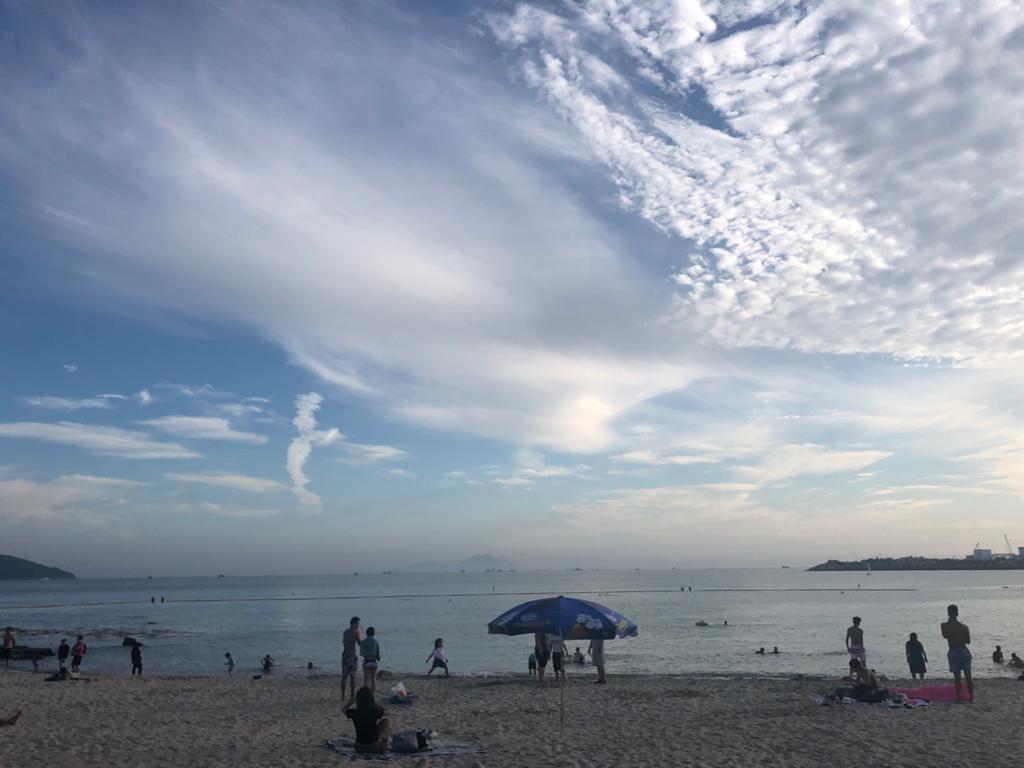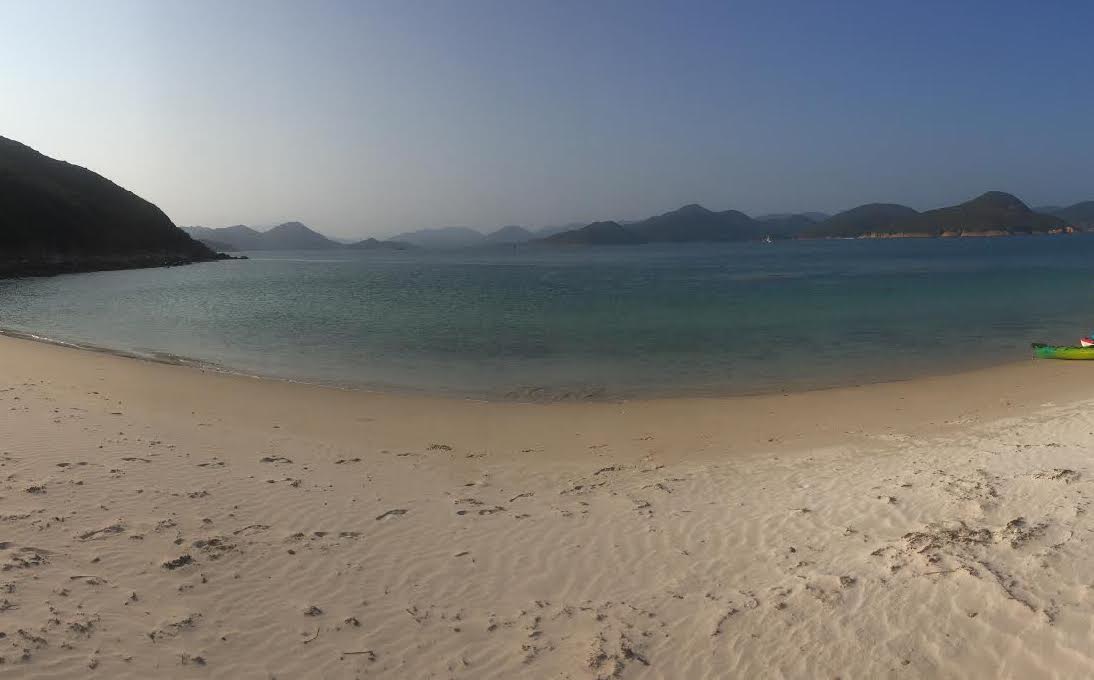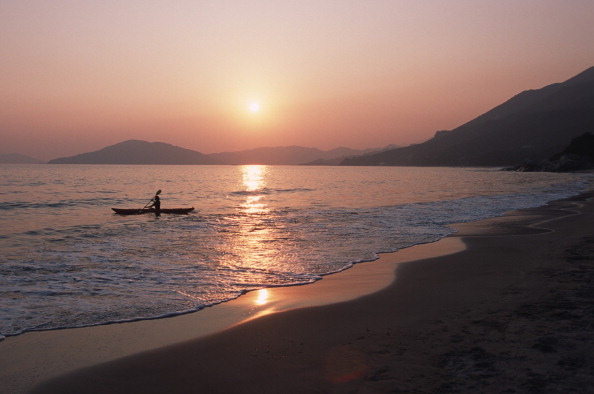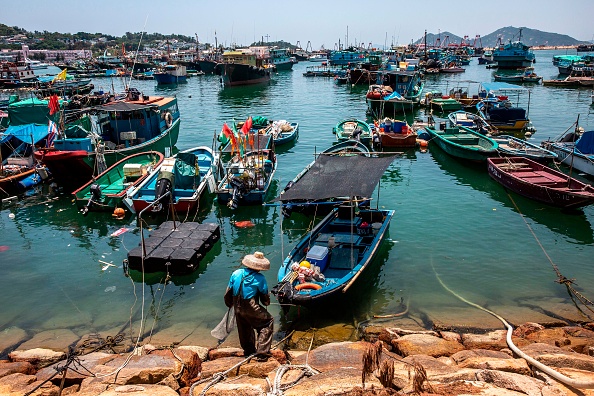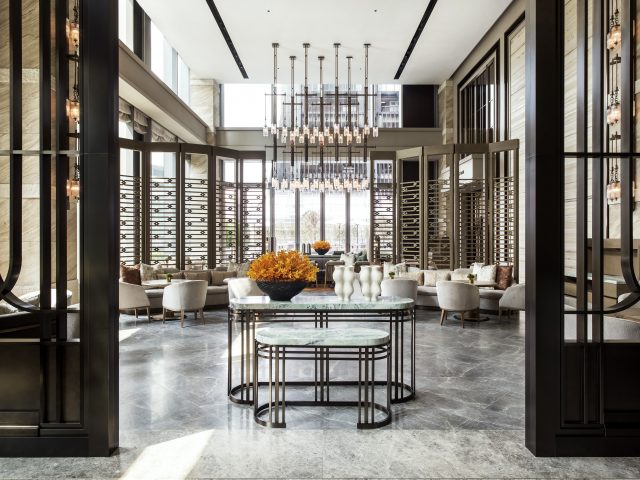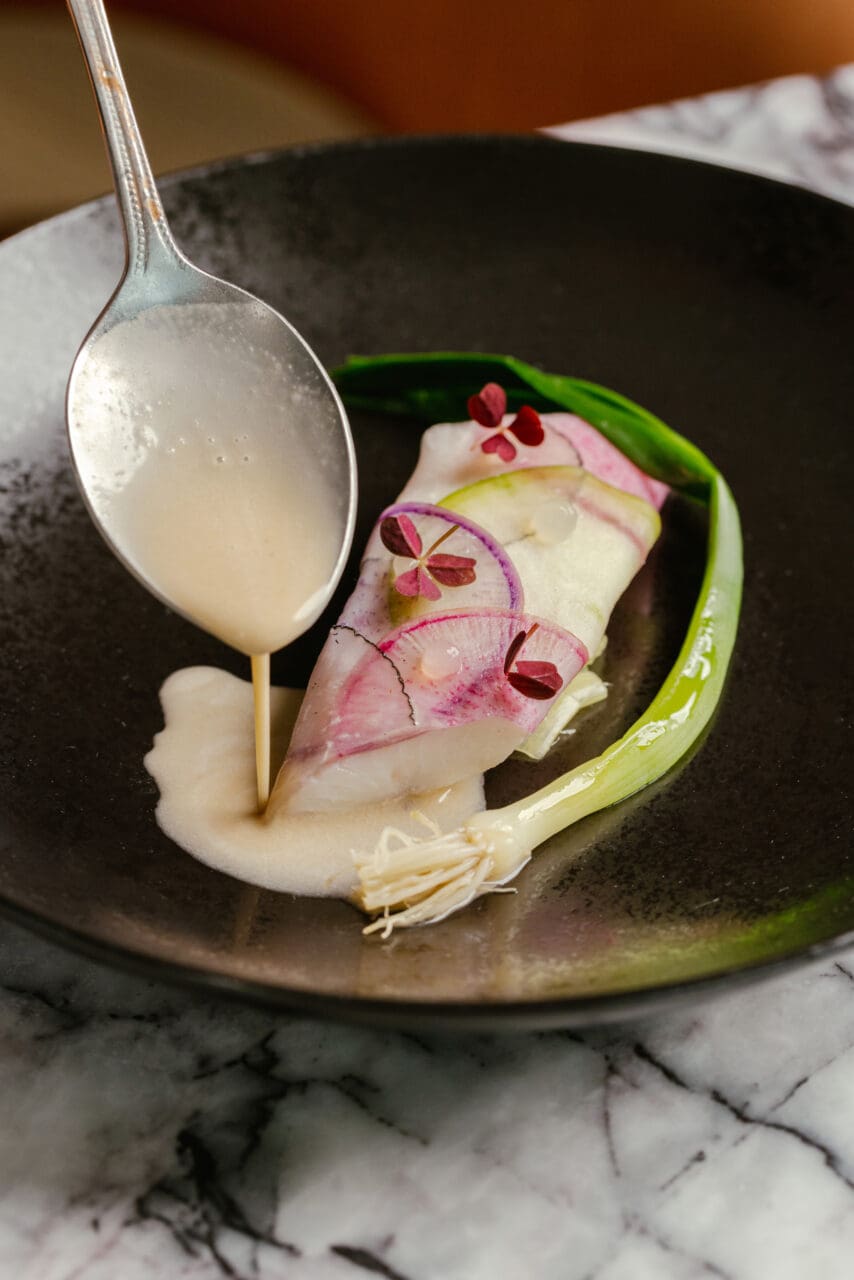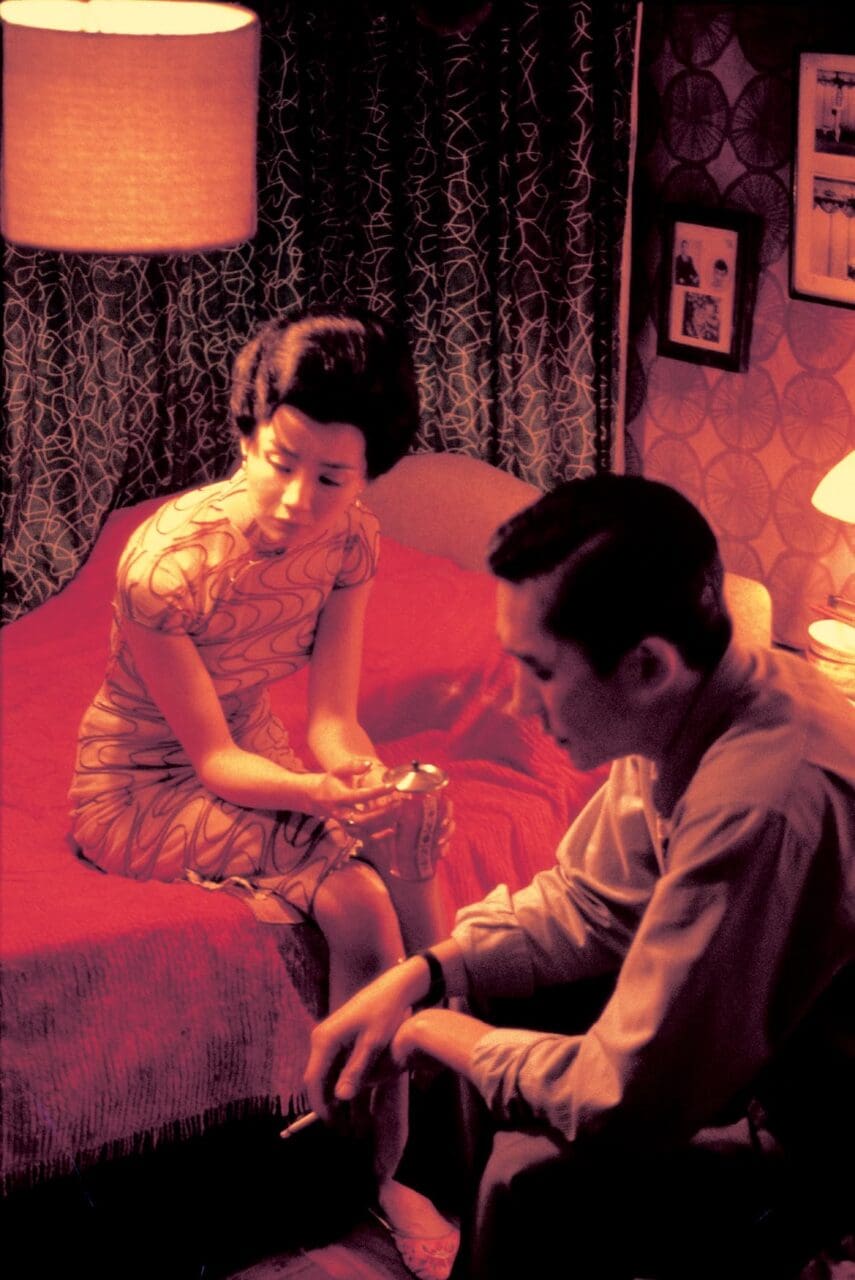More than 260 islands make up Hong Kong — some have idyllic beaches and lagoon waters, others are home to abandoned Hakka villages, bustling fishing ports or striking sedimentary rock formations. Most are remote and must be hiked or kayaked to, but others can be reached by ferry from Hong Kong island. Whether you’re after an adventure, great food, or beach basking, there’s an exotic island for you to escape to from the city, allowing you to leave behind the stress of urban life and feel connected to nature once again. And the best news is none of them require a passport or a plane ticket!
Tap Mun
Best island in Hong Kong for: Grassy hills and camping
How to get there: Kaito (small ferry) from Wong Shek Pier in Sai Kung
Known as Grass Island because of its verdant green meadows, this picturesque spot north of Sai Kung has crystal clear waters, a lively fishing village, a trio of centuries-old tin hau temples and is home to about a hundred Hakka and Tanka boat people. Start by walking along Tap Mun Hoi Pong Street, past fish drying in the sun and street food stalls selling milk tea, until you arrive at the Tin Hau Temple of Tap Mun, which has beautiful views out to the ocean and the rounded tiles of the traditional Chinese roofs. The 400-year-old temple has an altar that, as legend goes, is connected by a hidden tunnel to Tap Mun Cave on the opposite shore of the island, which was once a smuggling and pirate haven — try listening out for the sounds of the waves on the other side of the island. Enjoy seafood on the waterfront at Sun Hon Kee, which serves excellent Hakka cuisine — the specialty is sea urchin fried rice and deep-fried homemade squid balls. Then spend a night under the stars at Hilltop Pavilion, where scenic ocean vistas and green pastures are the perfect setting to pitch a tent for camping. Join people flying kites and kayaking around the island, which is a sanctuary for many types of marine life and enjoys blissfully clear, calm waters.
Lamma Island
Best island in Hong Kong for: Laid-back island life
How to get there: Ferry from Central
Once Hong Kong’s hippie haven, complete with the city’s first fully vegetarian lifestyle cafe and a collective of artists, Lamma Island is now popular with families and visitors for it’s laid back and unpretentious charm. It retains much of it’s ramshackle nature in its two small villages – Yung Shue Wan that’s filled with bars, restaurants and independent lifestyle boutiques, and Sok Kwu Wan, beloved for its traditional seafood restaurants along the waterfront — but it’s the scenic hiking trails and beautiful beaches that make this the ultimate day trip from Hong Kong. Start at Yung Shue Wan, where the ferry arrives from Central and have breakfast at Hideout cafe. Wander down the high street where stand-out shops include Lamma Vinyl Record Store, Mush Store and Lamma Brand, which sell graphic printed t-shirts and trendy Lamma Island memorabilia, before a meandering walk over to Sok Kwu Wan for a seafood lunch at Genuine Lamma Hilton. Spend the afternoon at one of Lamma’s beautiful beaches — there’s Mo Tat Wan, where visitors can enjoy drinks at beach shack The Bay, Hung Shing Ye, or Sham Wan Beach for powdery sands and turquoise waters. That last one is better known as Turtle Bay, as it is a regular nesting site for Green Turtles, and is, therefore, cordoned off from June to November. Stop by The Beer Shack on the way back to Yung Shue Wan for a craft beer or watch the sun go down from The Waterfront Restaurant and Bar, that exudes likeable informality with its traditional tiled floors, wicker chairs and views of the harbour.
Sha Tong Hau Shan
Best island in Hong Kong for: Coastal rock scenes and beautiful beaches
How to get there: By boat from Sai Kung or by kayak from Pak Lap Wan
One of the most picturesque of the city’s islands, Sha Tong Hau Shan or Bluff Island as it’s colloquially known, is situated within the Hong Kong UNESCO Global Geopark. Comprising eight areas in eastern Hong Kong, it features stunning examples of honeycomb patterned, ash-coloured rock formations that were the outcome of the dramatic volcano that created Hong Kong 140 million years ago. For Bluff Island that means some of the city’s tallest cliffs, standing at 140 metres high, which shelter an untouched beach with white sands and beautiful coral — the island was also zoned a Site of Special Scientific Interest in 1979 to protect the marine life. Visitors can venture to the uninhabited island either by chartering a boat from Sai Kung or by kayak from Pak Lap Wan. Wild Hong Kong runs kayaking day-trips through dramatic sea arches and caves to idyllic and remote beaches that are perfect for snorkelling, for $800 per person.
Lantau Island
Best island in Hong Kong for: Beaches, Buddah statues and traditional fishing villages
How to get there: Ferry from Central to Mui Wo or MTR to Tung Chung
From the Big Buddah and Po Lin Monastery, that can be reached by cable car from Tung Chung, to the traditional fishing village of Tai O that’s famous for its stilted houses, Qing Dynasty Tin Hau Temple, and pink dolphins, there’s plenty to draw you to Lantau, the largest of Hong Kong’s islands. In terms of hikes, there’s the challenging Sunset Peak trek, that’s (no surprise here) is the best place to see the sun go down from the third highest mountain in Hong Kong. Or walk from Mui Wo to Discovery Bay via Lo Fu Tau, passing through Mui Wo village, past Silvermine Waterfalls and a bat cave before embarking on the trail that journeys through organic farms that enjoy impressive vistas. For a more laid-back day, take the ferry to Mui Wo then either a bus or taxi to one of the island’s many beautiful beaches. There’s Lower Cheung Sha, where water buffalos join sunbathers, and sleek beach restaurant Bathers provides instant holiday vibes, overlooking the South China Sea. Mui Wo’s small cooked food market is worth a visit too, where local-favourite Wah Kee serves up fresh seafood and Cantonese dishes.
Yim Tin Tsai
St. Joseph's Chapel
Photo: ISAAC LAWRENCE/AFP at Getty Images
Best island in Hong Kong for: Abandoned villages, salt farms and a UNESCO recognised chapel
How to get there: Kaito (small ferry) from Sai Kung Public Pier
Literally translated as ‘Little Salt Pan,’ Yim Tin Tsai on the northeast of Hong Kong, is a derelict island originally populated by a family from Guangdong in the 1740s, whose descendents made a living selling salt. The business later moved to Vietnam and China, and the residents, many of whom were from the Hakka community, turned to farming and fishing. There’s very few people that remain on the island, but remnants of the island’s past are all around. The most distinct structure is a church that was built in 1890 by Catholic missionaries that was recently renovated after Josef Freinademetz, a missionary who lived in Yim Tin Tsai for a stint in the 1800s, was canonised and it became a site of pilgrimage for Catholics. In 2005, the white-washed church was awarded the UNESCO Asia-Pacific Heritage Awards for Culture Heritage Conservation. Since then, the salt pans have started functioning again, while the rest of the island is dominated by deserted 19th century houses, thick jungle and mangroves, with the glistening blue ocean seen everywhere you go.
Cheung Chau
Best island in Hong Kong for: Seafood and sampan rides
How to get there: Ferry from Central
Charter a sampan, a flat-bottomed Chinese wooden boat, or take the ferry from Central to Hong Kong’s foodie island. It’s most well-known for it’s annual Cheung Chau Bun Festival, a week of colourful celebrations normally held in May outside the Pak Tai Temple, that first started in the late Qing dynasty when islanders built an altar to their god Pak Tai to drive off the evil spirits besieging the island in the form of plague. This evolved into an enormous bamboo tower speckled with buns. Now, year-round, locals and visitors alike can buy ping on bao (peace buns) — white buns filled with either sesame paste, lotus-seed paste or red-bean paste — from the Kwok Kan Kee Cake Shop, which has been supplying the tasty treats for more than 40 years. As a functioning fishing village, Cheung Chau is also famous for its fishballs — head to Kam Wing Tai for the best ones — and seafood restaurants that line the waterfront. So Bor Kee serves up an extensive list of excellent Cantonese-style seafood, but the same is true of a whole host of red-and-white-table-clothed restaurants serving popular dishes to the crowds that come at the weekends. Sweet treats include huge frozen watermelon on sticks and mango mochi from Wan Sing Dessert, while trendy Japanese-inspired cafe Heima Heima is the place to go for tea, or head to Valor for coffee – it’s tropical coconut ice-dripped brew is served in a whole coconut. Aside from food, Cheung Chau’s temples, beaches, and even a pirate’s hideout — Chinese pirate Cheung Po-tsai, who once led a fleet of 600 ships, hid his booty on the island — make this an excellent island for a day trip. Wind-whipped Kwun Yam Wan is best for windsurfing, while 70-year-old Hing Kee Beach Store on sands of the same name, is the spot to grab a local craft brew and some delicious home-cooked food while looking out to the ocean.
Editor
Emma RussellCredit
Lead image: Arthur Elgort/Conde Nast via Getty Images

